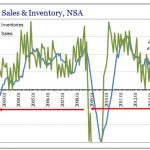In the stock market, reaching for high yields often backfires. To be sure, stocks with extremely high dividend yields look great on the surface.
For example, Capitala Finance Corp. (CPTA) has a 10% dividend yield. Capitala is one of 405 stocks with a 5%+ dividend yield. You can see the full list of established 5%+ yielding stocks here.
Not only that, but Capitala (like many Business Development Companies, or BDCs) pays its dividend each month. This allows investors to compound their wealth even faster than a stock that pays a quarterly or semi-annual dividend.
Not only that, but Harvest pays its dividend each month, rather than each quarter like most companies. You can see the entire list of all 34 monthly dividend stocks here.
At first, such a high dividend yield looks like a no-brainer. Who wouldn’t want to earn a double-digit return just from dividends? But looking closer, there are potential pitfalls when it comes to these extreme high-yielders.
This article will discuss why Capitala’s dividend yield—while very enticing—is better left for only the most risk-tolerant investors.
Business Overview
Capitala is a Business Development Company. Its strategy is to place debt and equity investments in low-and-middle market companies.
Capitala typically invests $5 million-$50 million per transaction. It focuses on companies with greater than $4.5 million of annual earnings before interest, taxes, depreciation, and amortization (EBITDA). The company has a portfolio worth $532.5 million, excluding cash. At the end of 2016, there were 53 investments in the portfolio. The investment portfolio is highly diversified, across many industry groups and asset classes. More than half of the portfolio is comprised of first lien debt.

Source: Q1 Investor Presentation, page 8
Approximately 81% of the portfolio consists of debt investments, with 19% equity investments. 2016 was a strong year for Capitala. Net investment income, defined as total investment income less expenses, rose 15% to $29 million for the year. Growth was due to a 6.7% increase in investment income, as well as cost controls. The company saw particularly strong dividend growth of 33% for the year, indicating very good performance from its equity investments. On a per-share basis, net investment rose 10% last year, to $1.84 per share. This was more than sufficient to cover the dividend payments in 2016.













Leave A Comment